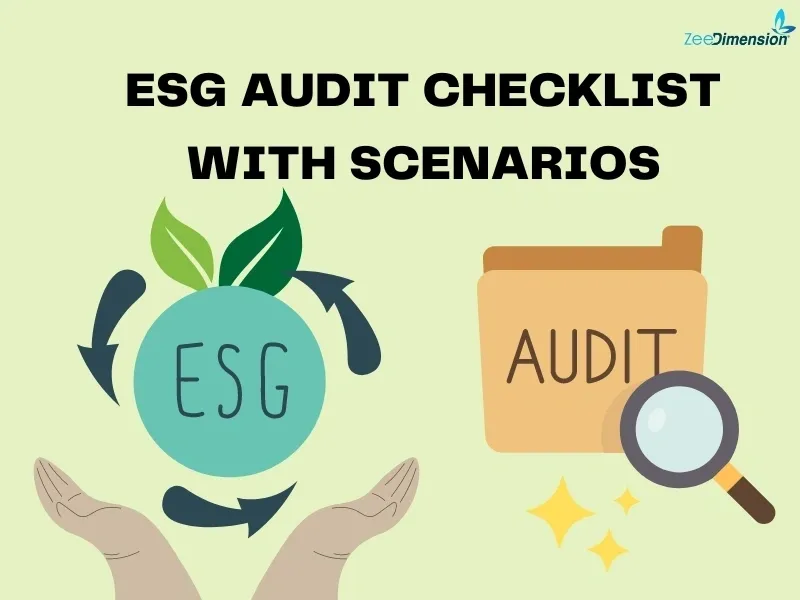
Ensure your organization meets environmental, social, and governance standards.
-
Environmental Checklist:
– Greenhouse Gas Emissions:Measure and report Scope 1, 2, and 3 emissions.
Scenario: A manufacturing company calculates emissions and implements an energy efficiency program.
– Energy Usage: Track consumption and adopt renewable energy.
Scenario: A tech firm transitions to 50% renewable energy for its data centers.
– Water Management: Monitor usage and implement conservation strategies.
Scenario: A beverage company reduces water usage by 30% with new technologies.
– Waste Management: Implement reduction, recycling, and disposal practices.
Scenario: A retail chain introduces a zero-waste policy, recycling 80% of waste.
– Biodiversity and Land Use: Assess and mitigate impacts on biodiversity.
Scenario: A construction company develops a biodiversity action plan.
-
Social Checklist:
– Labor Practices: Ensure fair labor practices and adherence to laws.
Scenario: A garment manufacturer audits supply chains for child labor and sets strict standards.
– Health and Safety: Maintain high standards of occupational health and safety.
Scenario: A mining company reduces workplace accidents by 40% with rigorous safety training.
– Diversity and Inclusion: Promote workplace diversity and inclusion.
Scenario: A financial services firm sees a 20% increase in minority representation in senior roles.
– Community Engagement: Engage with and support local communities.
Scenario: An energy company develops local education and healthcare projects.
– Customer Responsibility: Ensure product safety and ethical marketing.
Scenario: A food company implements stringent quality controls and transparent labeling.
-
Governance Checklist:
– Board Structure and Function: Ensure diverse and independent board composition.
Scenario: A tech company achieves gender parity and appoints independent directors.
– Executive Compensation: Align compensation with ESG performance.
Scenario: A manufacturing firm ties executive bonuses to ESG targets.
– Ethics and Compliance: Enforce anti-corruption policies.
Scenario: A multinational corporation reduces corruption incidents with training and audits.
– Risk Management: Integrate ESG risks into the risk management framework.
Scenario: A financial institution includes climate risk in credit assessments.
– Stakeholder Engagement: Foster transparent communication with stakeholders.
Scenario: A consumer goods company publishes comprehensive ESG reports and holds regular stakeholder meetings.
Conclusion
Content: An ESG audit is critical for improving sustainability and compliance.
Use this checklist and scenarios to identify gaps, implement strategies, and demonstrate commitment to ESG principles.
Call to Action: Ready to enhance your ESG performance?
Contact us today for a comprehensive ESG audit!
Visuals and Design:
– Use icons and images relevant to each checklist item (e.g., a factory for emissions, a wind turbine for energy usage).
– Include graphs or infographics for scenarios where appropriate (e.g., before-and-after charts for water usage reduction).
– Keep the design clean and professional, using the organization’s branding colors and fonts.







